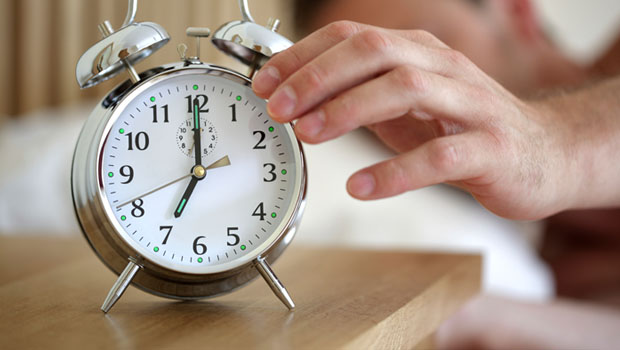Creating the Right Diabetes Goals for Yourself
Goals are hard and we typically have trouble meeting them, particularly so when we let others set our goals and then judge us

Creating and owning your goals
We each need our own goals! Otherwise, others will set goals for us and we get lectured and feel bad when we don’t meet those goals.
- How many times have you shown up for a doctor’s appointment and been frustrated with the fact that your blood sugars haven’t improved, your weight hasn’t budged, and you’re still eating the foods you’ve vowed to never eat again?
- How many times have you been lectured by your doctor, spouse, mother, brother on how you ought to lose weight, manage your diabetes better, eat a healthier diet, and exercise more?
A goal that comes from shame or guilt or feelings of failure easily become impossible to achieve. You cannot guilt a person into a succeeding. You cannot shame a person into caring more about their health. You cannot lecture someone to the point of inspiration.
Instead, let’s take a look at what a realistic, achievable, motivating goal really looks like.
Goals within your control?
“Too often, we create goals based on things we can’t necessarily control,” explains Alexis Elliott, LCSW, LISW-CP, CDE, a health coach with specialties in diabetes, eating disorders, and nutrition.
You can control what you eat, how you move, how often you move, how you respond to stress.
On the other hand, you can’t control”
- How quickly you’ll lose weight
- Whether your body needs help from diabetes medications because of gradual beta-cell dysfunction
- You can’t jog for exercise or walk for exercise because of an injury
- You have to be around less-than-healthy food because of office environments or treats for your children
- The list goes on and on
“It’s about changing a behavior,” says Elliott. “You do have control over your behavior every single day. That doesn’t mean it will always be easy, or that it needs to change 100 percent of the time.”
Create goals based on what you can control.
Let go of your excuses
“When I hear a patient making excuses about exercising because of injuries or they’re tired after work, I know there’s a lot of resistance there,” says Elliott.
If you’ve spent all day sitting at a desk and you’re telling yourself that you’re too tired to exercise after work, you’re making an excuse.
On the contrary, your body is probably craving exercise because it feels so lethargic after sitting all day long!
The same goes for nutrition. If you’re telling yourself that you don’t have time to cook healthy meals and that’s why you always pick-up McDonald’s on the way home, you’re making an excuse. Healthy food doesn’t have to involve 45 minutes of cooking and 15 ingredients.
What excuses have you been clinging to that continue to prevent you from achieving your goals?
“Check yourself and identify your own priorities,” says Elliott. “If you’re saying you want to lose weight but you’re not willing to choose exercising over sitting on the couch, your goals and priorities aren’t matched up.”
What would happen if you let go of those excuses?
Start where you are
“We gotta get that snowball rolling!” reminds Elliott.
Don’t worry about trying to jog a mile if you haven’t been already walking several miles.
And by the way, jogging doesn’t necessarily lead to greater weight-loss than walking! Plus walking is much better for your joints and your back.
“Start where you are. Start small,” says Elliott. “The simple fact that you’re reading this article tells me that you’re further along in the process than you think.”
We often think of progress towards a goal as the moment when we take action, but Elliott points out that simply thinking about your goal is an important first step.
“There’s pre-contemplation, contemplation, and action. And each of these steps matter.”
All it takes to get the ball rolling is simply moving forward.
Maybe that means one 15-minute walk every day. Or maybe it means you’re meal-prepping a healthy lunch and dinner for 3 days of the week rather than 7. It’s okay to start small. It doesn’t have to be all-or-nothing. It’s okay to strive for 2 healthy meals per day while 2 meals are less than healthy.
Small steps. Small improvements. Get the ball rolling.
How ready are you to make changes?
“I ask my patients, ‘On a scale of 0 to 10, how ready are you to make changes?’” explains Elliott. “And how important is making this change to you?”
Sometimes, we set out to achieve a goal that someone else has set out for us or told us we ought to achieve.
“Are you trying to achieve something that isn’t something you really want to do?” asks Elliott.
Just because you know you ought to be exercising every day doesn’t mean you’re ready to do that. And if you’re not ready, you’ll be putting pressure and expectation on yourself to accomplish an impossible thing.
“If it’s not very important to you to lose weight, for example, then ask yourself, ‘Why not?’” suggests Elliott. “What’s holding you back? There’s value in simply looking at why you don’t want to make those changes.”
Sometimes simply looking at your disinterest towards weight-loss or your apathy towards improving your diet can help uncover more of what’s really driving those detrimental habits. Sometimes acknowledging that you don’t want to lose weight is the beginning of the journey.
Start small
“It doesn’t have to be all or nothing,” says Elliott. “Start small. “You make a change in one area — like at breakfast — you feel confident and see the benefits in your blood sugar. Then you start making changes in other areas.”
Elliott adds, too, that just because you’re improving how you eat doesn’t mean you must also start exercising right now, too.
Start small. Start where you are ready. Finding success in one small part of your life will give you the confidence to eventually, gradually tackle another part of life.
“Confidence increases readiness,” says Elliott. “Just get started and establish that one new, little habit. Even it’s just twice per week!”
It doesn’t have to happen every single day to offer potential benefits. Walking for 10 minutes on Tuesdays and Fridays can eventually evolve into also walking on Sundays and Wednesdays.
“When it becomes something you just do, you do it without thinking.”




